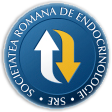
- Login
- Register
- Home/Current Issue
- About the journal
- Editorial board
- Online submission
- Instructions for authors
- Subscriptions
- Foundation Acta Endocrinologica
- Archive
- Contact
 Romanian Academy
Romanian Academy
 The Publishing House of the Romanian Academy
The Publishing House of the Romanian Academy

ACTA ENDOCRINOLOGICA (BUC)
The International Journal of Romanian Society of Endocrinology / Registered in 1938in Web of Science Master Journal List
Acta Endocrinologica(Bucharest) is live in PubMed Central
Journal Impact Factor - click here.

-
General Endocrinology
Gluhovschi G, Velciov S, Curescu S, Nicola T, Gluhovschi C, Bob F,Trandafirescu V, Petrica L, Bozdog G, Tveici M, Vernic C
The glomerular filtration rate in patients with breast cancer treated by radiation and chemotherapy followed by tamoxifen. Does tamoxifen influence renal function in patients with breast cancer?Acta Endo (Buc) 2009 5(3): 309-315 doi: 10.4183/aeb.2009.309
AbstractIntroduction. Patients with breast cancer are treated after surgery by radiation and\r\nchemotherapy, potentially nephrotoxic. Patients with tumor estrogen-positive receptors are then\r\ntreated with Tamoxifen with a possible renoprotective effect. Aim. To assess the effects of\r\nradiation and chemotherapy and of Tamoxifen on renal function in patients with breast cancer.\r\nPatients and Methods. We undertook a retrospective observational study on 76 breast\r\ncancer patients during 2002-2006. Depending on the estrogen receptor status of the tumour\r\nthey were divided into group A (estrogen positive) with 50 patients, mean age: 57.64?9.34,\r\ntreated with Tamoxifen and group B (estrogen negative), 26 patients, mean age: 50?9.83\r\nwho did not receive Tamoxifen. Both groups underwent surgical tumor resection, radiation\r\nand chemotherapy. The TNM status of the tumours was similar in both groups. (2/3 stages\r\nI and II and 1/3 stages III and IV). We followed up the GFR (MDRD 4) before radiation and\r\nchemotherapy and after this treatment. Thereafter, we followed up the GFR in group A at 1,\r\n2 and 3 years of Tamoxifen and in group B at 1, 2 and 3 years of radiation and\r\nchemotherapy. Statistical analysis was performed using OpenEpi 2.3. software.\r\nResults. In group A the GFR declined not significantly after radiation and chemotherapy\r\nand at 1 year of Tamoxifen. At 2 ys of Tamoxifen, in the 18 surviving patients the GFR\r\nincreased from 61.13?17.53 mL/min to 66.56?16.3 mL/min (p=0.009). At 3 y of Tamoxifen,\r\nthe 12 surviving patients showed a preservation of the GFR. In group B the GFR declined from\r\n88.14?14.63 mL/min (baseline) to 80.01?20.62 mL/min (p=0.0001) after radiation and\r\nchemotherapy. At 1 y after radiation and chemotherapy the GFR declined to 78.21?17.65\r\nmL/min (p<0.001). At 2 y after radiation and chemotherapy in the 18 surviving patients the\r\nGFR declined to 70.94?13.39 mL/min (p<0.001 as compared to baseline). At 3 y in the 8\r\nsurviving patients the GFR declined to 61.36?9.17 mL/min (p=0.001 as compared to baseline).\r\nConclusions. Patients undergoing treatment with Tamoxifen (group A) showed a\r\npreservation of their renal function. In patients undergoing radiation and chemotherapy\r\nalone (group B) we noticed a decline of the Glomerular Filtration Rate. -
Actualities in medicine
Ursu HI
Actualities in ThyroidologyActa Endo (Buc) 2014 10(2): 309-311 doi: 10.4183/aeb.2014.309
Abstract- -
Endocrine Care
Pascanu I, Pop R, Barbu CG, Dumitrescu CP, Gherlan I, Marginean O, Preda C, Procopiuc C, Vulpoi C, Hermanussen M
Development of Synthetic Growth Charts for Romanian PopulationActa Endo (Buc) 2016 12(3): 309-318 doi: 10.4183/aeb.2016.309
AbstractThere are no new national growth references for the Romanian population and the current recommendations for short stature evaluation is the use of the Swiss growth charts developed based on a longitudinal study. The aim of the present paper is to present the new synthetic growth references for Romanian children. Material and methods. We used local Romanian data from 9 studies with information on height and weight obtained between 1999 and 2016. Based on their plausibility and methodology six studies were selected for generating the National Synthetic Growth References for Romanian Children based on the specific methodology described previously. The selected studies included 8407 subjects measured in schools/kindergartens. Age is reported in years covering a range from 3-18 years. Height and weight were measured at a precision of 0.1 cm and 0.1 kg. All children were measured at normal temperature, in light clothes, without footwear. Results. We present the charts and tables with the common centiles for height, weight and body mass index for boys and girls. Conclusion. We suggest synthetic growth references based upon recent growth data from 6 different Romanian regions as new National Growth Charts for Romanian children. -
General Endocrinology
Rizvi SI, Chakravarty S
Modulation of Acetylcholinesterase Activity by Melatonin in Red Blood CellsActa Endo (Buc) 2011 7(3): 311-316 doi: 10.4183/aeb.2011.311
AbstractIntroduction. Melatonin, the major pineal secretion, regulates sleep/wake cycle and plays an important part in several physiological functions. It is a powerful free\r\nradical scavenger and upregulates several antioxidant enzymes to reduce oxidative stress.\r\nObjective. Mammalian red blood cells contain membrane-bound acetylcholinesterase. Melatonin, being an effective\r\nantioxidant, may cause alteration in erythrocyte acetylcholinesterase activity.\r\nMethods. The study was carried out on 29 healthy donors of both sexes who gave informed consent for the use of their blood samples for the study. The erythrocytes isolated from blood collected at two different timings of the day were subjected to in vitro treatment with melatonin in a concentrationdependent manner followed by the assay of\r\nenzyme activity.\r\nResults. A rhythmic pattern is observed in the activity of acetylcholinesterase, the activity being higher in diurnal samples. Exogenous melatonin modulates the activity of acetylcholinesterase in erythrocytes which is more pronounced at such concentration close to the peak physiological level of melatonin in the body.\r\nConclusion. The increase in the enzyme activity may be explained in relation to the antioxidant potential of melatonin, which is in accordance with the change in photic signals. Further study is required to understand the\r\nmechanism of action. -
Endocrine Care
Toma A, Diaconu B, Gheorghiu M, Sava N, Nedelcu L, Trifanescu R, Sava M, Barbos D, Coculescu M
Persistence of neurological cretinism in old endemic goiter areas of the CarphatiansActa Endo (Buc) 2005 1(3): 311-324 doi: 10.4183/aeb.2005.311
AbstractThe subCarpathian areas of Arges county are now characterized by a moderate endemia of iodine deficiency disorders (IDD) due to salt iodization. However, we found some cases of endemic cretinism (EC), that is the major expression of anomalies in the physical and intellectual development caused by a severe iodine deficiency. There are presented 5 patients, 4 men and 1 woman, with neurological endemic cretinism (NEC) (n=2) and mixed forms of the disease (n=3), coming from 2 old endemic areas (medium urinary iodine excretion in the studied patients 20.8 g/day), diagnosed and treated in outpatients clinics or in hospitals. Four patients are members of the same family. The age of the patients is between 36 and 84 years old, the average age being 69. The intellectual capacity was assessed by using the Wechsler and Raven tests, the average intelligence quotient (IQ) value was of 20.8 points ? 1.47. The thyroid volumes (TV) were estimated by palpatory method and by ultrasonography and were between 8.7-200 ml. TSH values in studied patients ranged between 3.8-26 IU/ml and free T4 ranged between 0.272-1.22 ng/dl. Aggregation of more cases of endemic cretinism in the same family suggests the occurrence of some genetic factors. In conclusion, the old age (over 70 years old) of 4 cretins shows they are remnants of the old IDD endemia. However, there is also an isolated case of middle age (36 years old) suggesting an inadequate iodine intake, despite a law regarding salt iodization which has been operating since 1962. More attention to the universal salt iodization and to consumption of iodized salt in the rural areas is necessary. -
General Endocrinology
Akin S, Boluk C, Ozgur Y, Aladag N, Gecmez G, Keskin O, Turk Boru U, Tasdemir M
Overtreatment and Hypoglycemia Prevalence in Geriatric Patients with Type-2 Diabetes in the Turkish PopulationActa Endo (Buc) 2019 15(3): 311-316 doi: 10.4183/aeb.2019.311
AbstractObjective. To determine the prevalence of overtreatment and hypoglycemia in Turkish type-2 diabetes patients and to identify the risk factors. Methods. Patients ≥ 65 years, having a minimum 5 years of type-2 diabetes, were included in the study. Patients’ body mass index, mean HbA1c level, disease onset and medications related with their co-morbidities were recorded. Over-treatment is defined as the use of non-metformin therapies despite having HbA1c levels < 7%. A history of hypoglycemia episodes in the last three months and patients’ home blood glucose measurements were recorded. Factors relating to hypoglycemia and over-treatment were analyzed. Results. After applying criteria, 755 patients were included in the study: 728 patients (96.4%) had at least one comorbidity. 257 patients (34%) were found to have HbA1c levels < 7%. 217 of them (84.4%) were using non-metformin therapies. 497 patients (65.8%) were using insulin. The overtreatment prevalence in the ≥ 65 years group was 28.7%. The over-treatment ratio in ≥ 80 years group was 28.2%. Hypoglycemia prevalence in the last three months was 23.3%. It was 22.7% for patients ≥ 80 years. Mean age, disease duration, body mass index, insulin usage and doses were found to be significantly different in over-treated patients compared to the others. Conclusions. This study showed that despite recent guidelines, there is still a considerable amount of overtreated geriatric patients who are at risk of hypoglycemia and related morbidity and mortality. Insulinization rate was high. Physicians should not avoid de-intensifying the treatment of geriatric patients who have multiple co-morbidities. -
Endocrine Care
Uysal E, Acar YA, Celik R, Nasuhbeyoglu N
Plasma Interleukin-6 Levels May Be Associated with the Length of Stay Time of Adult Hyperglycemic Patients in an Intensive Care UnitActa Endo (Buc) 2020 16(3): 311-315 doi: 10.4183/aeb.2020.311
AbstractContext. Estimation of intensive care unit (ICU) length of stay time (LOS) may be challenging, and proinflammatory cytokines can be used as a marker for this purpose. Objective. The current study aimed to investigate the association between pro-inflammatory cytokine levels and LOS in hyperglycemic patients admitted to adult ICU. Design. This is a prospective observational study. Subjects and Methods. All adult ICU patients with a blood glucose level higher than 250 mg/dL, during the study period were included. Hospitalization day demographics were recorded, and plasma IL-6, IL1-ß, and TNF-α concentrations were measured. Results. A total of 74 patients were enrolled in the study. Diabetic ketoacidosis (DKA) was positive in 31 patients, and the remaining 43 were in the non-DKA (NDKA) group. There was no difference between the two groups in terms of age, gender, LOS, hemoglobin, hematocrit, lactate levels, and platelets count. IL-6, IL-1ß, and TNF-α levels did not show any difference between DKA and NDKA groups (p=0.784, 0.413, and 0.288, respectively). There was a positive correlation between IL-6 levels and LOS (n=74, Pearson correlation=0.330; p=0.004). Conclusions. Among pro-inflammatory cytokines, IL-6 showed a better performance for the prediction of LOS than IL-1ß, TNF-α, and CRP. -
Endocrine Care
Craciun A, Rusu A, Craciun CI, Bala C, Roman G, Veresiu IA, Georgescu CE
Changes in Body Composition after Three Months of Insulin Therapy in Type 2 Diabetes - A Cohort Retrospective StudyActa Endo (Buc) 2015 11(3): 312-318 doi: 10.4183/aeb.2015.312
AbstractObjectives. The objective of this retrospective study was to evaluate weight gain at 3 months following insulin therapy initiation and to determine if it is due to fat or fat free tissue. Methods. Fifty-eight patients with T2DM and initiation of insulin therapy were evaluated. Body composition was assessed with InBody720 device (Biospace, Korea) before and 3 months after the initiation of insulin therapy. Results. The insulin therapy was initiated with basal insulin in 84.48% of the cases. The initial dose of insulin was 22.76±12.89 units/day and increased at 3 months to 30.81±18.49 units/day (p<0.001). The initial HbA1c was 9.86±2.02% and decreased to 7.58±1.19% (p<0.001). The body weight increased from 87.01±17.37 kg to 88.04±16.64 kg (p=0.026). The fat body mass and the percent of fat decreased with no statistical significance; the intracellular and extracellular body water increased significantly (intracellular: 26.30±5.96 vs. 27.26±6.16; extracellular: 16.61±3.63 vs. 17.03±3.84; p<0.001). Conclusion. During the first 3 months after initiation of insulin therapy a modest weight gain due to increase in the body water after restoration of the metabolic balance was observed. -
Endocrine Care
Gursoy AF, Tokmak A, Eroglu S, Yesilyurt H
Effect of Insulin Resistance of the Occurence of Pregnancy in Women Treated Empirically for Unexplained InfertilityActa Endo (Buc) 2017 13(3): 314-321 doi: 10.4183/aeb.2017.314
AbstractContext. The detrimental effects of hyperinsulinemia on human ovaries during follicular development process have been shown in various studies, particularly in women with polycystic ovary syndrome. To our knowledge there is no study regarding the effect of insulin resistance (IR) on the intrauterine insemination (IUI) success in women with unexplained infertility (UEI). Objective. To evaluate the effects of IR on the occurrence of pregnancy among infertile women undergoing ovulation induction (OI) with IUI for UEI. Design. Prospective cohort study. Subjects and Methods. 173 patients who met the criteria for UEI and under the age of 35 were included in this study. All women underwent OI with IUI and, subsequently, they were divided into two groups based on the presence of pregnancy. Data reviewed for analysis were demographic, clinical, and laboratory features. Results. There were 37 (21.4%) cycles with pregnancy and 136 (78.6%) cycles without pregnancy. Median infertility duration was significantly lower in the pregnant group when compared with non-pregnants (p=0.018). The mean number of previous cycles per patient was also lower in this group (p=0.028). No significant differences were found between the groups in terms of other variables. Levels of insulin, fasting glucose and HOMA-IR were also similar between the two groups. Conclusions. IR calculated by using HOMA-IR index has no positive or negative effect on the occurrence of pregnancy in women undergoing OI therapy with IUI for UEI. -
General Endocrinology
Panaitescu AM, Isac S, Pavel B, Ilie AS, Creanga M, Totan A, Zagrean L, Peltecu G, Zagrean AM
Oxytocin Reduces Seizure Burden and Hippocampal Injury in a Rat Model of Perinatal AsphyxiaActa Endo (Buc) 2018 14(3): 315-319 doi: 10.4183/aeb.2018.315
AbstractContext. Foetal asphyxia, a frequent birth complication, detrimentally impacts the immature brain, resulting in neuronal damage, uncontrolled seizure activity and long-term neurological deficits. Oxytocin, a neurohormone mediating important materno-foetal interactions and parturition, has been previously suggested to modulate the immature brain’s excitability, playing a neuroprotective role. Our aim was to investigate the effects of exogenous oxytocin administration on seizure burden and acute brain injury in a perinatal model of asphyxia in rats. Animals and methods. Asphyxia was modelled by exposing immature rats to a 90-minute episode of low oxygen (9% O2) and high CO2 (20% CO2). Control rats were kept in ambient room-air for the same time interval. In a third group of experiments, oxytocin (0.02 UI/g body weight) was nasally administered 30 minutes before the asphyxia episode. Seizure burden was assessed by the cumulative number of loss of righting reflex (LRR) over a two-hour postexposure period. Acute brain injury was assessed through hippocampal S-100 beta, a biomarker of cellular injury, 24-hours after exposure. Results. Asphyxia increased both LRR and hippocampal S-100 beta protein compared to controls, and these effects were significantly reduced by oxytocin administration. Conclusion. Oxytocin treatment decreased both seizure burden and hippocampal injury, supporting a potential neuroprotective role for oxytocin in perinatal asphyxia.